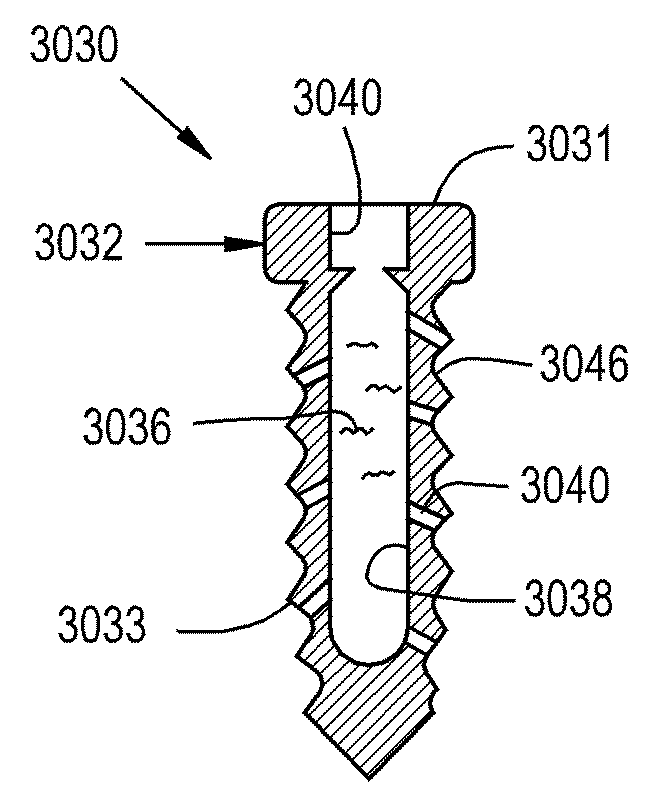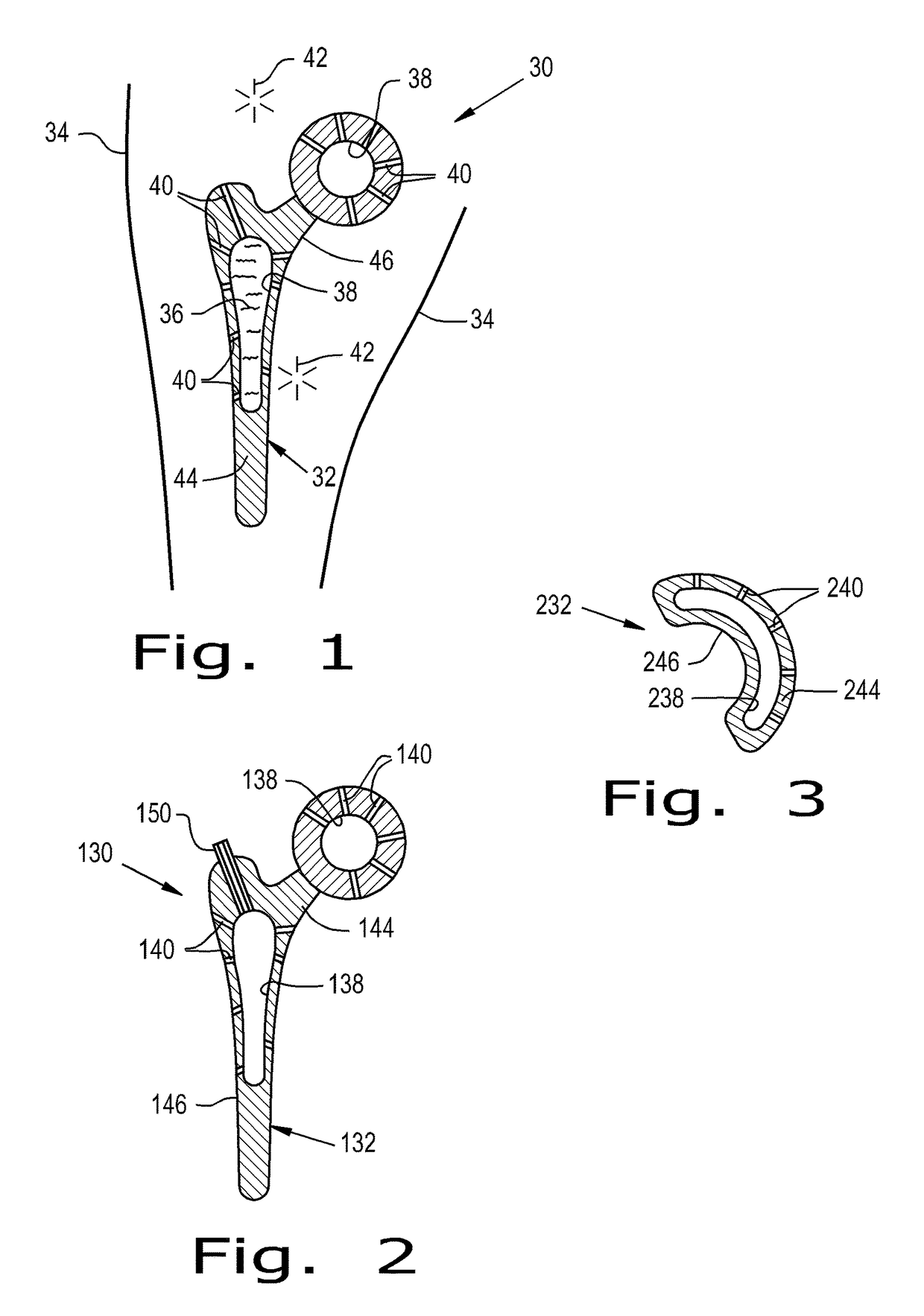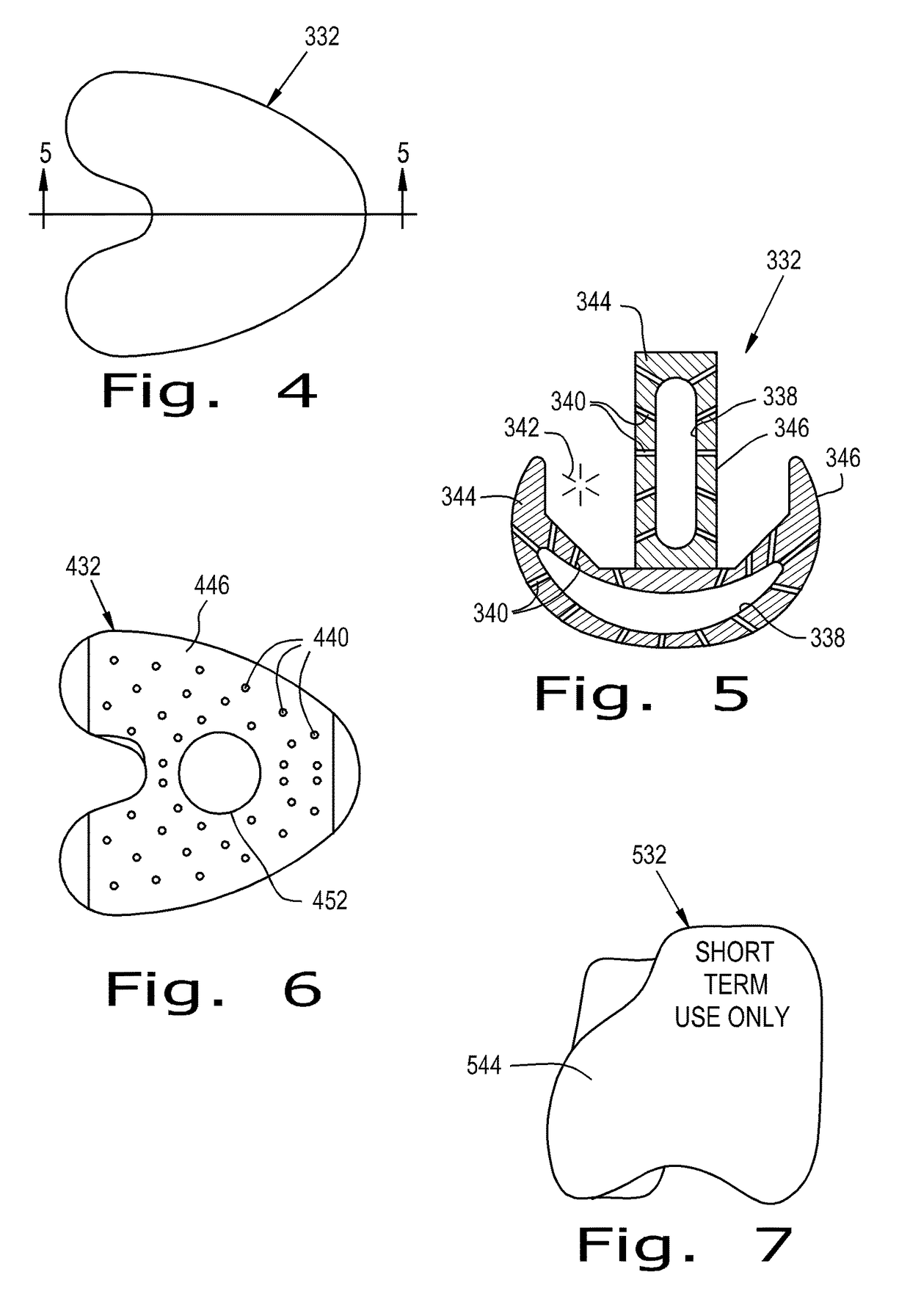Drug delivery implants
a technology of antibiotic cement implants and implants, applied in the field of implants, can solve the problems of limited patient mobility, range of motion, weight bearing, and inability to change the type or dose of antibiotics, and achieve the effect of reducing the number of patients, and reducing the number of antibiotics
- Summary
- Abstract
- Description
- Claims
- Application Information
AI Technical Summary
Benefits of technology
Problems solved by technology
Method used
Image
Examples
Embodiment Construction
[0101]Referring now to the drawings, and more particularly to FIG. 1, there is shown an orthopaedic implant system 30 according to the present invention which generally includes an orthopaedic implant 32 implantable at a selected location within a corporeal body 34 and configured for delivering at least one therapeutic agent 36 to the corporeal body 34. The implant 32 includes at least one reservoir 38 and a plurality of channels 40. The reservoir 38 is configured for receiving at least one therapeutic agent 36 and can be configured for being refilled with the therapeutic 36 agent after the implant 32 has been implanted in the corporeal body 34. Channels 40 form pathways for the therapeutic agent 36 to move from the reservoir 38 to a treatment site 42 relative to the corporeal body 34. Each pathway formed by a channel 40 is an interior space formed by the walls of channel 40. Channel 40 can, for example, have a circular, square, or some other cross-sectional shape. Thus, channels 40...
PUM
 Login to View More
Login to View More Abstract
Description
Claims
Application Information
 Login to View More
Login to View More - R&D
- Intellectual Property
- Life Sciences
- Materials
- Tech Scout
- Unparalleled Data Quality
- Higher Quality Content
- 60% Fewer Hallucinations
Browse by: Latest US Patents, China's latest patents, Technical Efficacy Thesaurus, Application Domain, Technology Topic, Popular Technical Reports.
© 2025 PatSnap. All rights reserved.Legal|Privacy policy|Modern Slavery Act Transparency Statement|Sitemap|About US| Contact US: help@patsnap.com



